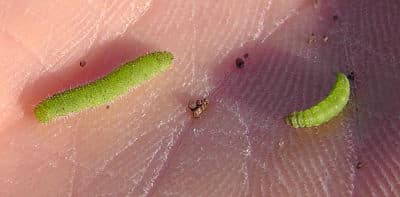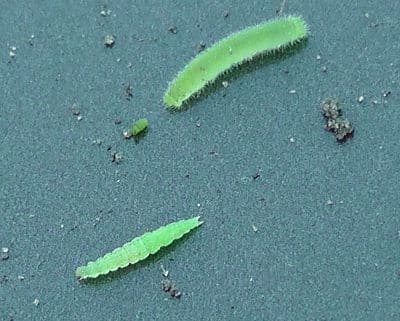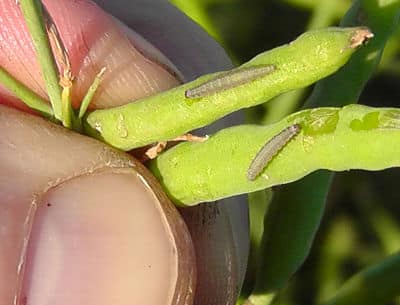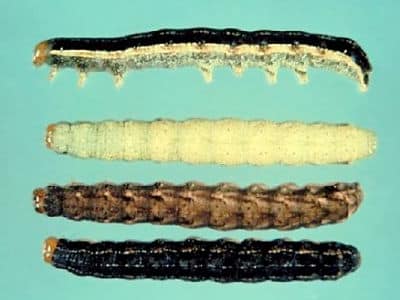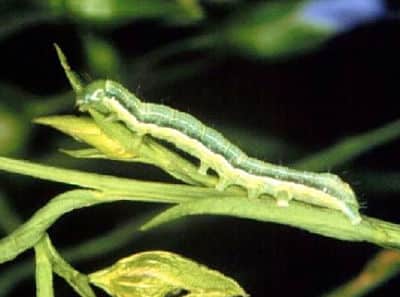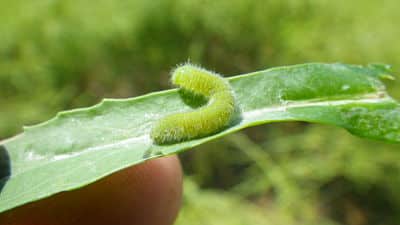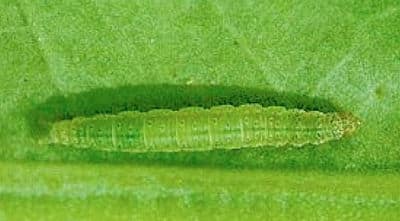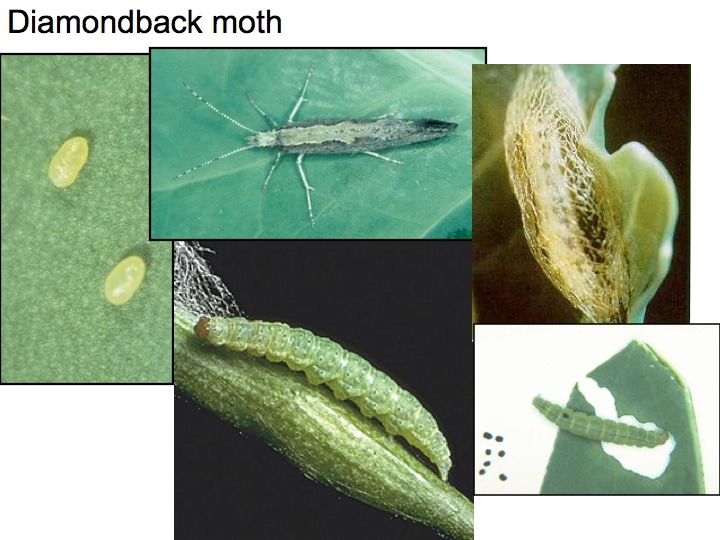Many growers are spraying for bertha armyworm, even though a forecasting program based on collecting adult moths in pheromone-baited traps had reported low bertha armyworm moth counts in most areas. This shows the benefit of field scouting in addition to forecasting models. Forecasting programs can alert us to areas of higher risk, but often the levels of larvae in individual fields can be higher or lower than expected based on these regional predictions. For example, female moths are attracted to flowering canola when laying their eggs. Even if overall moth counts are low, they could be concentrated in the earliest canola crops that were flowering during egg laying. Presence of predators is another reason. Lady beetle adults can consume large numbers of bertha armyworm eggs, and if they’re not present, more eggs will hatch.
Before spraying, make sure the worms are actually the species you’re trying to control. Here’s how to tell the difference:
Bertha armyworm. Berthas are shinier and the yellow-orange stripe along each side is more pronounced, even on younger ones. Mature larvae are up to 1.5” long, making them considerably larger than diamondback moth larvae at late stages. Being part of the cutworm family, they also curl up when agitated. While cabbageworms tend to stay on the leaves as long as leaves are available, bertha will move up into the pods earlier. The threshold for bertha is 17 per square meter when canola is $12 and application costs are $12 per acre. Click here for more.
Diamondback moth larvae. When agitated, diamondback moth larvae will wiggle backwards and dangle from the plant on a thread. Diamondback moth larvae are spindle shaped — fatter in the middle than at the end. They also rarely grow beyond 12 mm (0.5”) in length, versus bertha larvae which can reach 4 cm (1.5”). The threshold for diamondback larvae is about 200 per metre square at today’s canola price.
Imported cabbageworm (larvae of cabbage butterfly). These worms are light green with a lemon-yellow stripe down the middle of the back (dorsal side). They are covered with short hairs giving it a velvety appearance. They grow to about 30 mm. Cabbageworms look more like diamondback moth larvae than bertha armyworms, but are more docile than diamondback moth larvae and less spindle shaped. As long as there is good vegetative growth, they feed mostly on leaves and it is not usually economical to spray them. Some growers have reported 8-10 per plant, but before spraying, check regularly to see if damage ceases over the next week. Cabbageworms have 2-3 generations per year and will go into pupal stage quicker than the other two larvae. Most cabbageworms in southern Alberta are infested with parasitoids, so they feed less and die before pupating.
Scout throughout each field. Insects may be concentrated only in certain areas in the field, while the rest of the field is not seriously affected. A blanket spray of the whole field may not be warranted. Larval numbers can also vary substantially between fields in close proximity, depending on crop staging and the attractiveness of the field at egg laying.
